Ajka Glass
We are wandering among the glass-laden boxes. Running overhead, pipes in the dim light. The huge hall is divided by rows of lehrs. Not long ago they served five kilns, and fifteen hundred people bustled around, as ants: transporters, glass blowers, mold makers, and mold workers. There are many, many hands managing the glass products until packaging. Today there are less than three hundred workers, and only one kiln is working. The factory reduced to a manufactorer not only due to technical improvements, but the market changed as well.
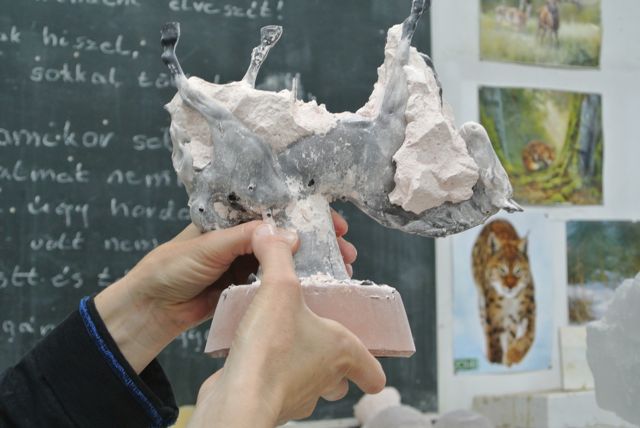
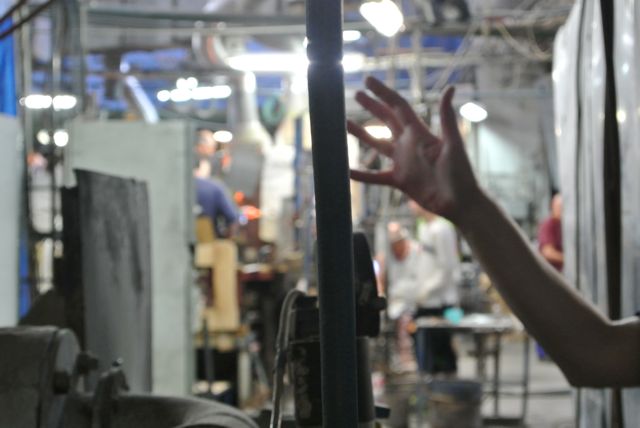
I might join to the semester-end field trip of the glass-major students of the High School of Arts and Crafts, Budapest. We are to meet the globally special, variegated technology and, behind it, the experts having special knowledge. When they leave, this knowledge dies away.
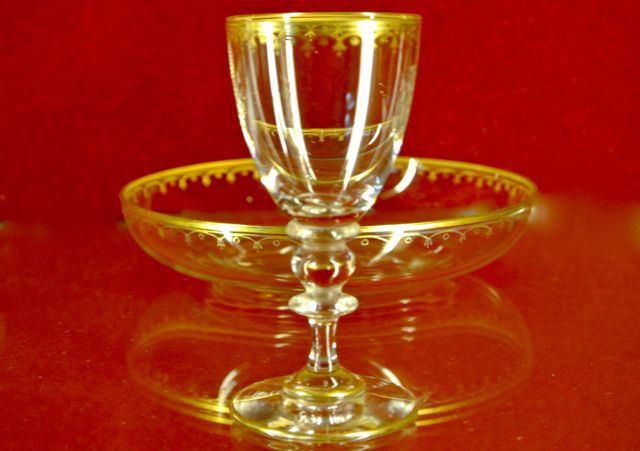
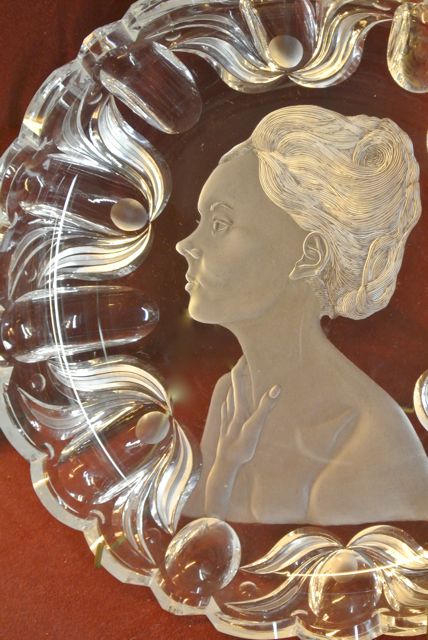
In 1878, Saxon and Bavarian glass masters initiated the glass production here in Ajka, a small mining town at the foot of the Bakony Mountains. At the time of the founder, Bernát Neumann and of the new owner, János Kossuch, the plant produced glass containers (bottles, jars) and lampshades. Later, thin-walled potash-glass decorative objects were decorated with gold and engraving. These rare specimens are in museums nowadays.
After the WWII and the nationalization they produced tableware in industrial amount.
From the sixties on, lead crystal production started, which is great for cutting and engraving. Coloring experiments were successful, and the “überfang” technology was initiated. A very thin layer of color glass, applied to the clear lead-crystal base is sandblasted or engraved, is producing a noble pattern.
The cameo process needs the most amount of handwork. Multiple layers of different color cover the base, and sand blowing shapes the pattern and the background. These items, numbered, are produced in small series only. Even the gilding has not gone out of style. These are made almost exclusively for order.
The inimitable splendor of lead crystal is achieved by heating or acid dipping. They dipped these objects to the warm bath of sulfuric acid by hand before, now the glass is bathed and then washed in huge vats. Leaving the vat in rubber baskets, the glass is tested with compressed air, and then packed.
Entering the last door to the youngest workshop, we can learn the difference between the ‘pâte-de-verre’ and the casting method. In the former case glass frits or crushed glass are melted together, in the latter one blocks of glass are melted to a mould. There is no other exact and safe way to produce a flailing horse of thin legs or a hundred-pound statue. For these goals pressing is unsuitable.
After this interesting day of even industrial history and culture, you can surely ask some question. Why were our domestic glassworks closed down? Is it a global trend only, or is it about something else? What is the future: lease working or to build an own brand? How to motivate the young ones to give their lives for one of the beautiful handmade arts and crafts?
glass designer artist of the Ajka Glass Ltd for her hospitality and for the rich information, as well as
Profs. Kriszta Kecskés and Kristóf Bihari,
teachers of the glass major class, High School of Arts and Crafts for the opportunity.
PREVIOUS: Rieger Tibor
NEXT: Gábriel Ajna
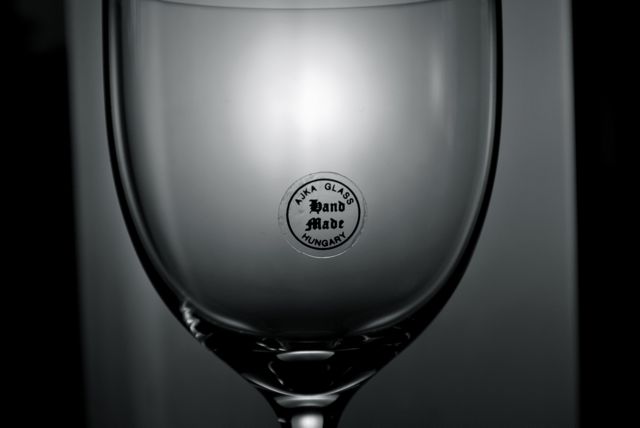
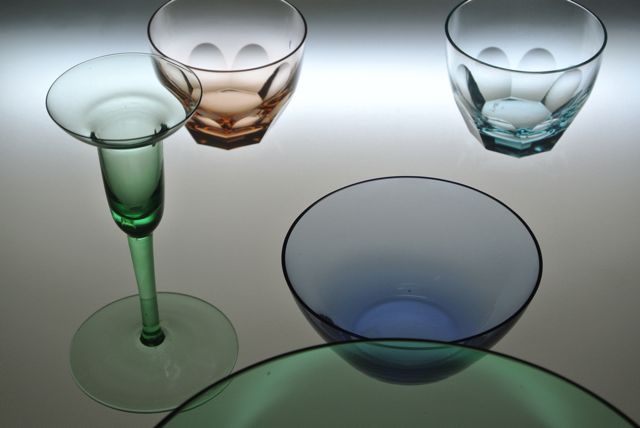
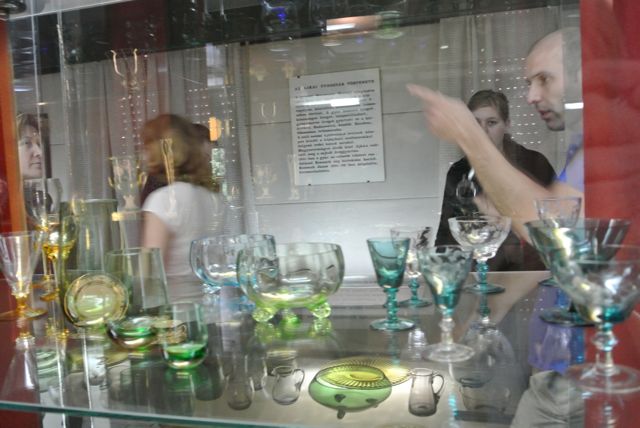
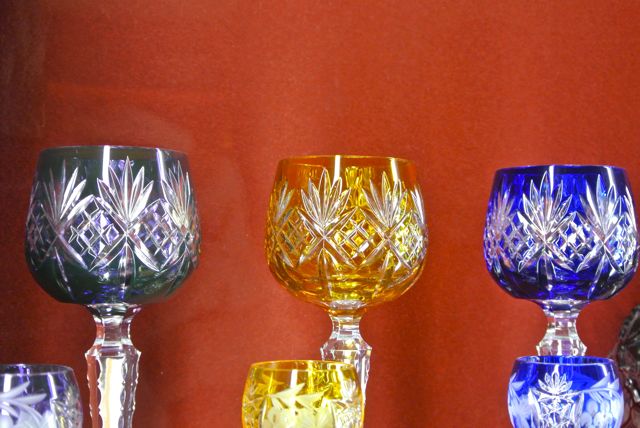
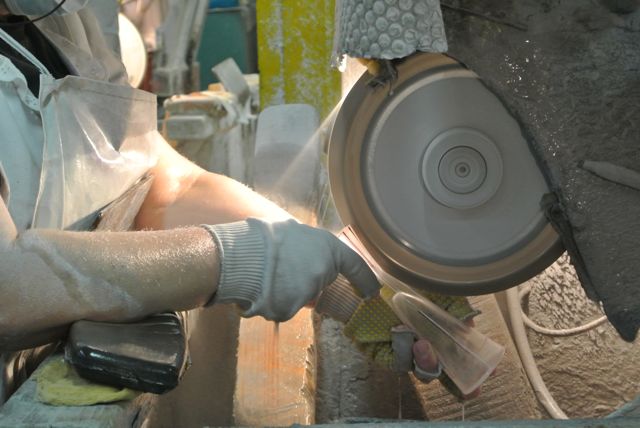
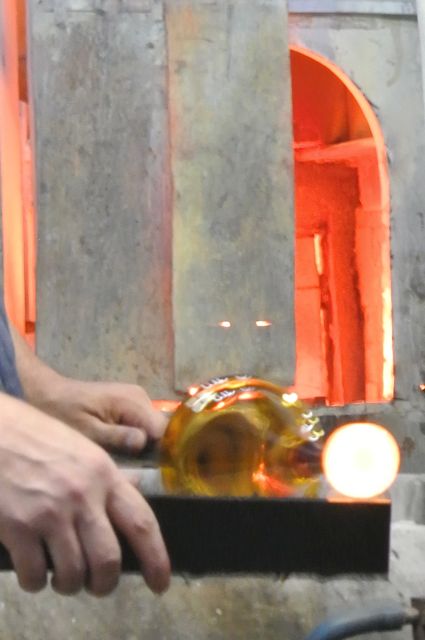
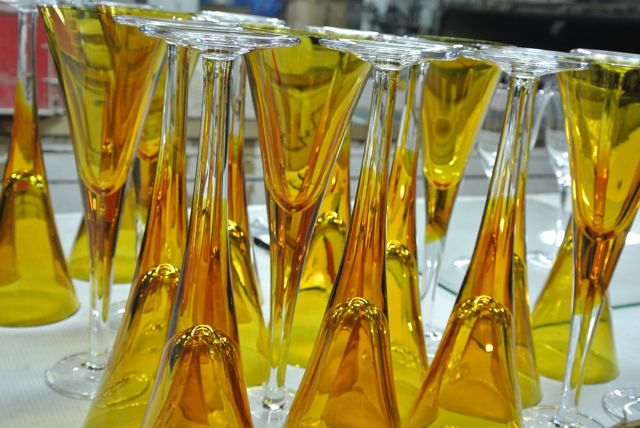
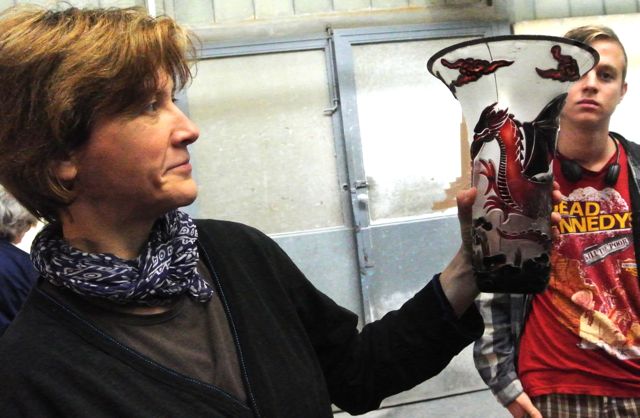
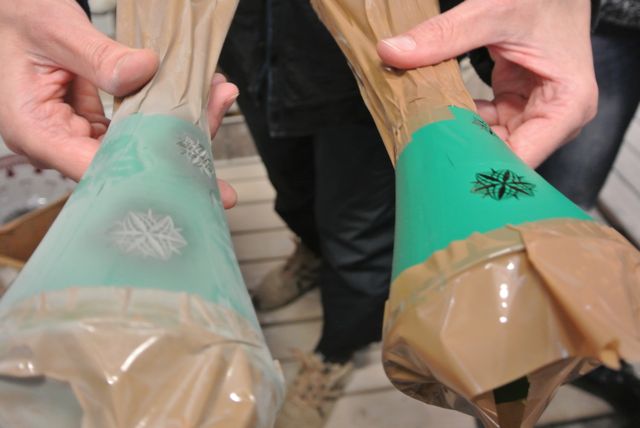
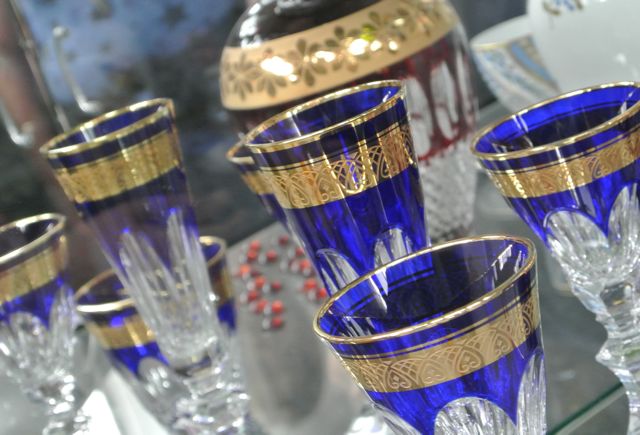
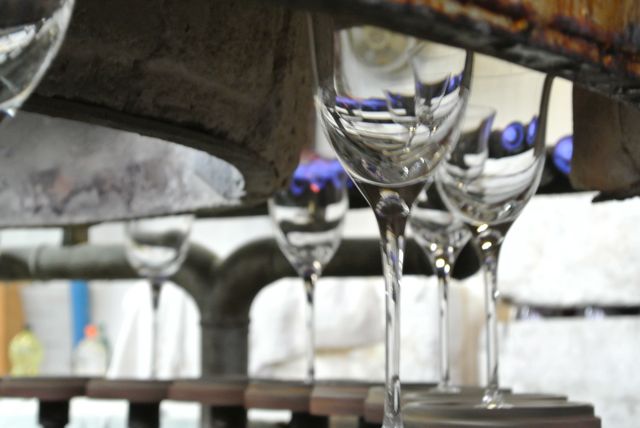
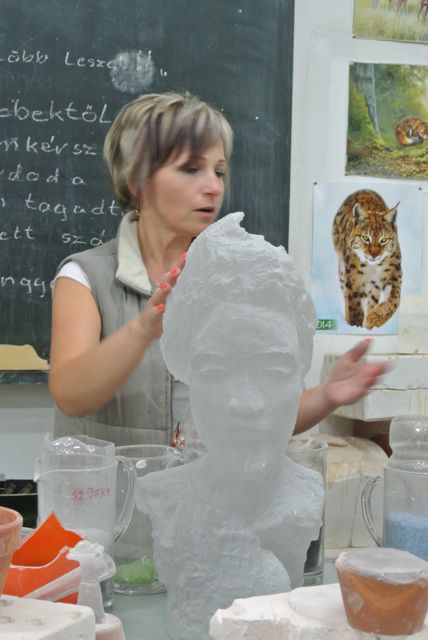
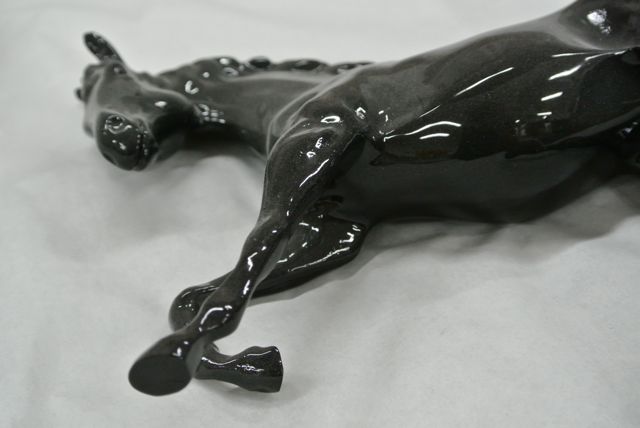
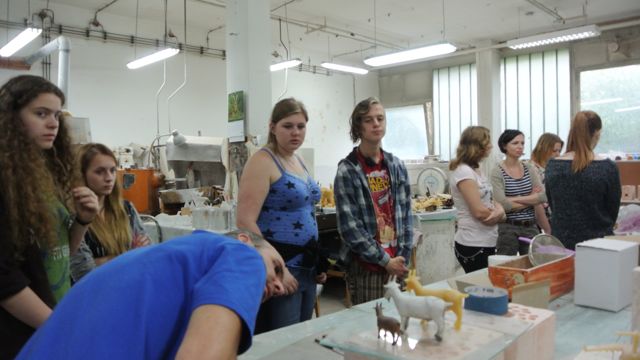
USER COMMENTS ( 0 )
Follow Comments via RSS feed. Trackback Comments from your website.